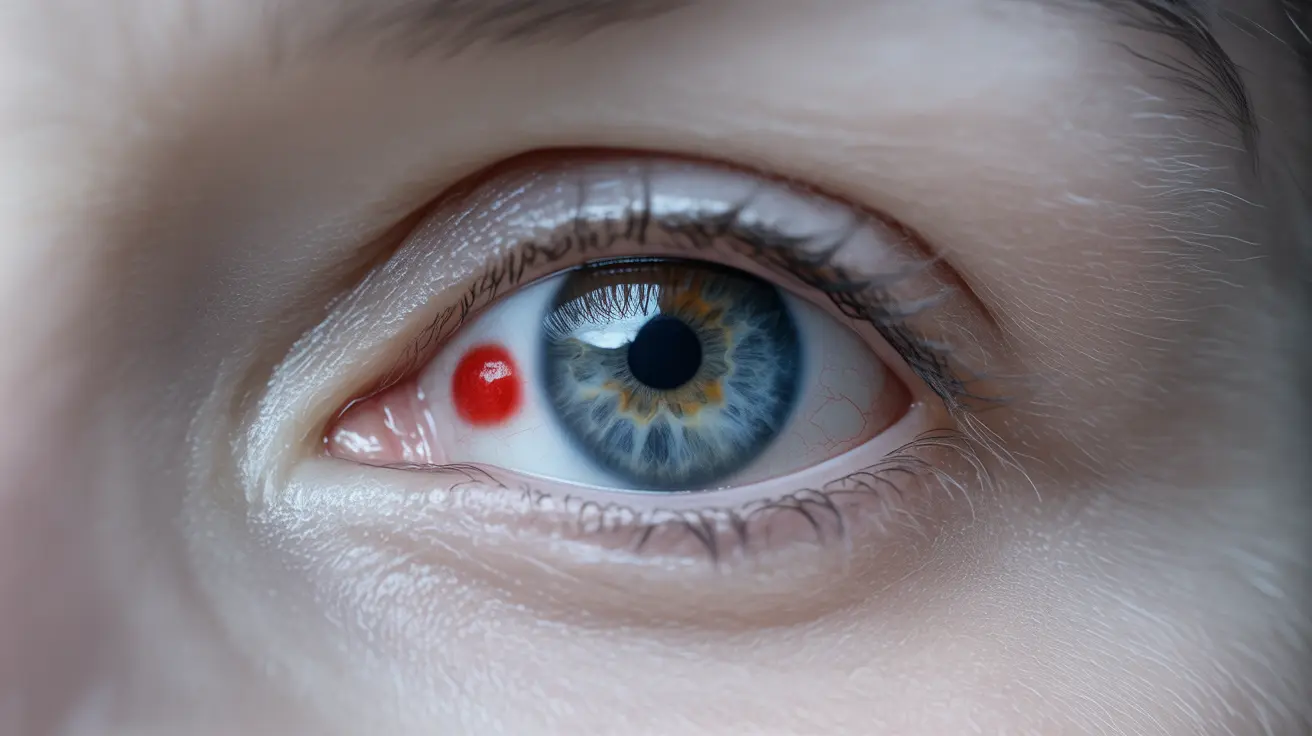Discovering a red dot on your eye can be concerning, but understanding its causes and knowing when to seek medical attention can help ease your worry. These spots, which typically appear on the white part of the eye (sclera), are often harmless but sometimes require professional evaluation.
In this comprehensive guide, we'll explore the common causes of red dots on the eye, treatment options, and important warning signs that indicate when you should consult an eye care professional.
Common Causes of Red Dots on the Eye
Red dots on the eye usually result from one of several conditions:
Subconjunctival Hemorrhage
The most common cause of a red dot on the eye is a subconjunctival hemorrhage. This occurs when tiny blood vessels beneath the conjunctiva (the clear surface of the eye) break and leak blood. While it may look alarming, it's usually harmless and can be caused by:
- Sudden pressure changes
- Heavy lifting
- Intense coughing or sneezing
- Eye strain
- Minor trauma
Broken Blood Vessels
Similar to subconjunctival hemorrhage, individual broken blood vessels can create small red dots. These often result from:
- Rubbing eyes too hard
- Contact lens irritation
- Eye infections
- High blood pressure
Treatment and Management Options
Most red dots on the eye will heal naturally without specific treatment. However, there are several ways to support healing and prevent complications:
At-Home Care
Consider these self-care measures:
- Use artificial tears to keep eyes lubricated
- Avoid rubbing or touching the affected eye
- Take breaks from digital screens
- Apply a cool compress if discomfort occurs
Prevention Strategies
To reduce the risk of developing red dots on your eye:
- Practice good eye hygiene
- Maintain proper contact lens care
- Manage underlying health conditions
- Protect eyes during physical activities
When to Seek Medical Attention
While most red dots are harmless, certain symptoms warrant immediate medical evaluation:
- Vision changes or blurriness
- Eye pain or pressure
- Sensitivity to light
- Additional spots developing rapidly
- Associated headache or dizziness
- Recent head trauma
Frequently Asked Questions
What causes a red dot on the white part of my eye and is it dangerous?
A red dot on the white part of your eye is typically caused by a subconjunctival hemorrhage or broken blood vessel. While alarming in appearance, it's usually not dangerous and will heal on its own within 1-2 weeks. However, if accompanied by pain or vision changes, medical evaluation is recommended.
How can I treat or manage a red spot on my eye at home?
Most red spots can be managed at home by using artificial tears, avoiding eye rubbing, taking screen breaks, and applying cool compresses if needed. No specific medical treatment is usually necessary unless other symptoms develop.
When should I see a doctor about a red spot or red dot on my eye?
Seek medical attention if you experience vision changes, eye pain, light sensitivity, rapid development of additional spots, or if the red dot appears after head trauma. Also consult a doctor if you have underlying health conditions or the spot doesn't improve within two weeks.
Can a red dot on the eye affect my vision or cause pain?
Typically, a red dot alone doesn't affect vision or cause pain. However, if you experience vision changes or pain, this could indicate a more serious condition requiring immediate medical evaluation.
How long does it take for a red dot from a subconjunctival hemorrhage to heal?
A subconjunctival hemorrhage usually heals completely within 1-2 weeks. The red spot will gradually change color and fade as it heals, similar to a bruise. No specific treatment is needed to speed up this natural healing process.




